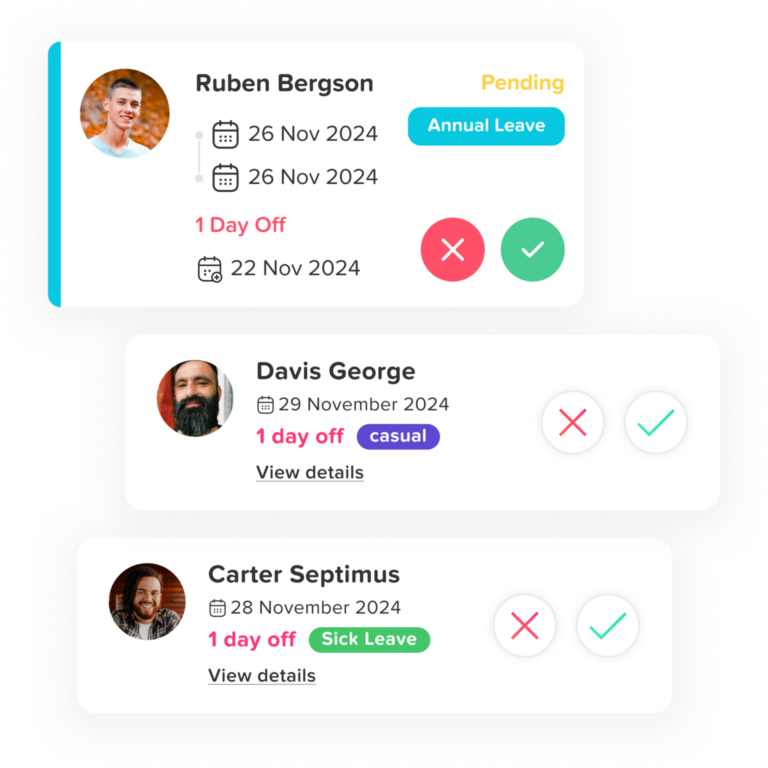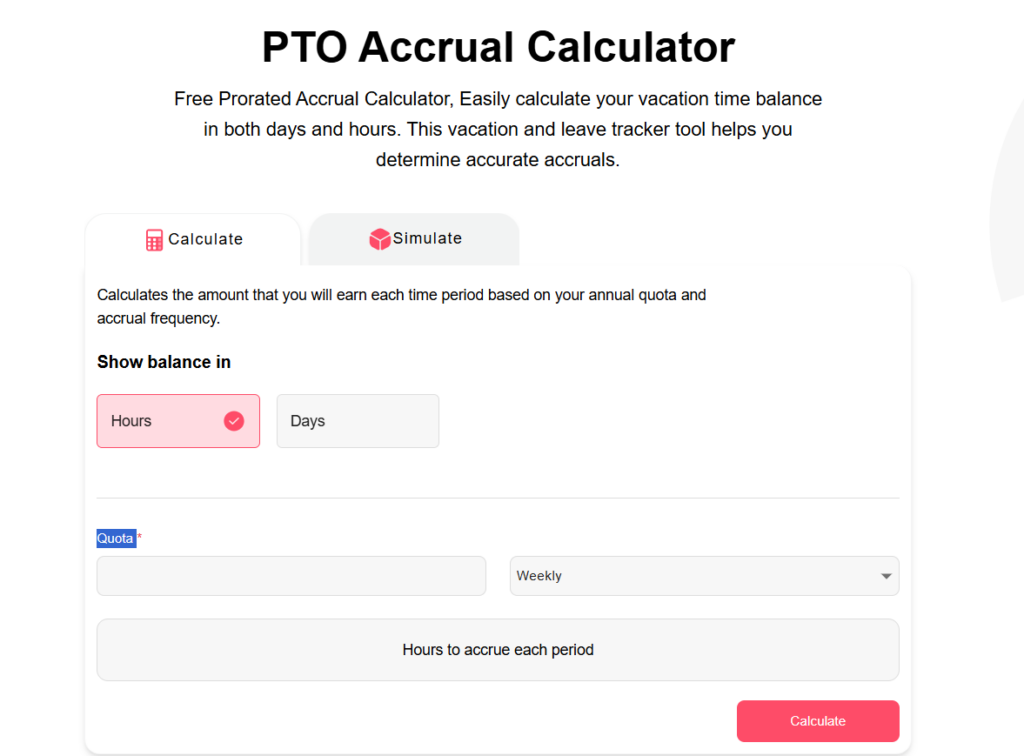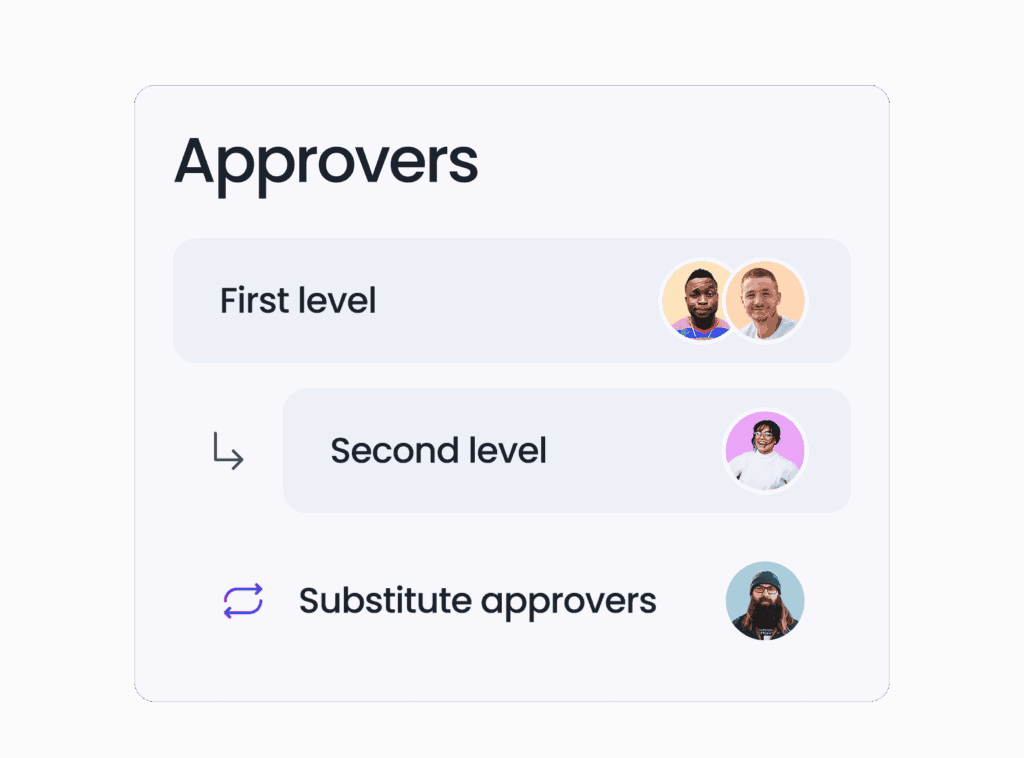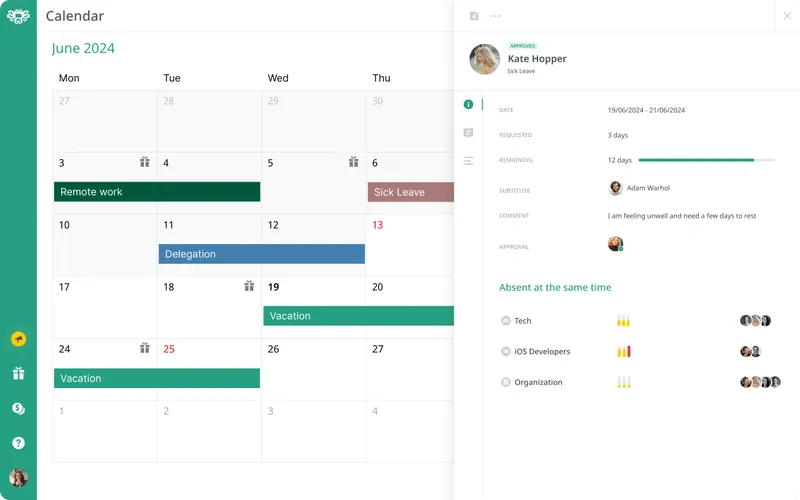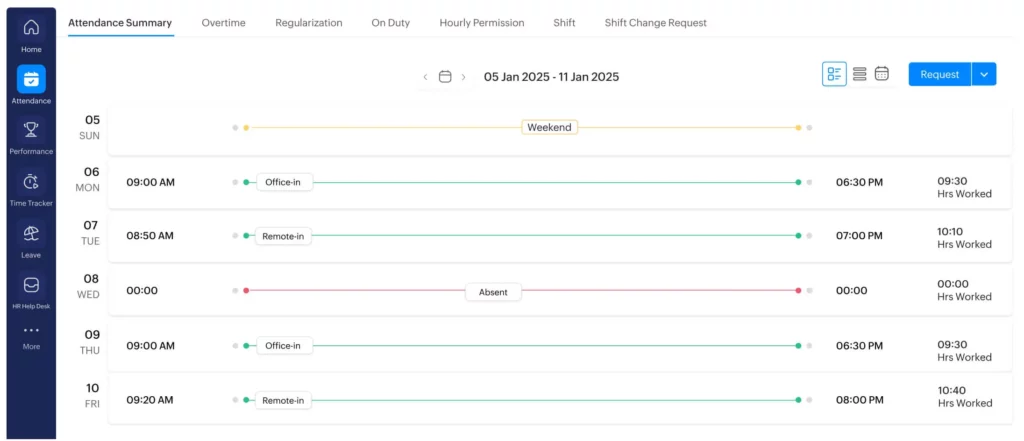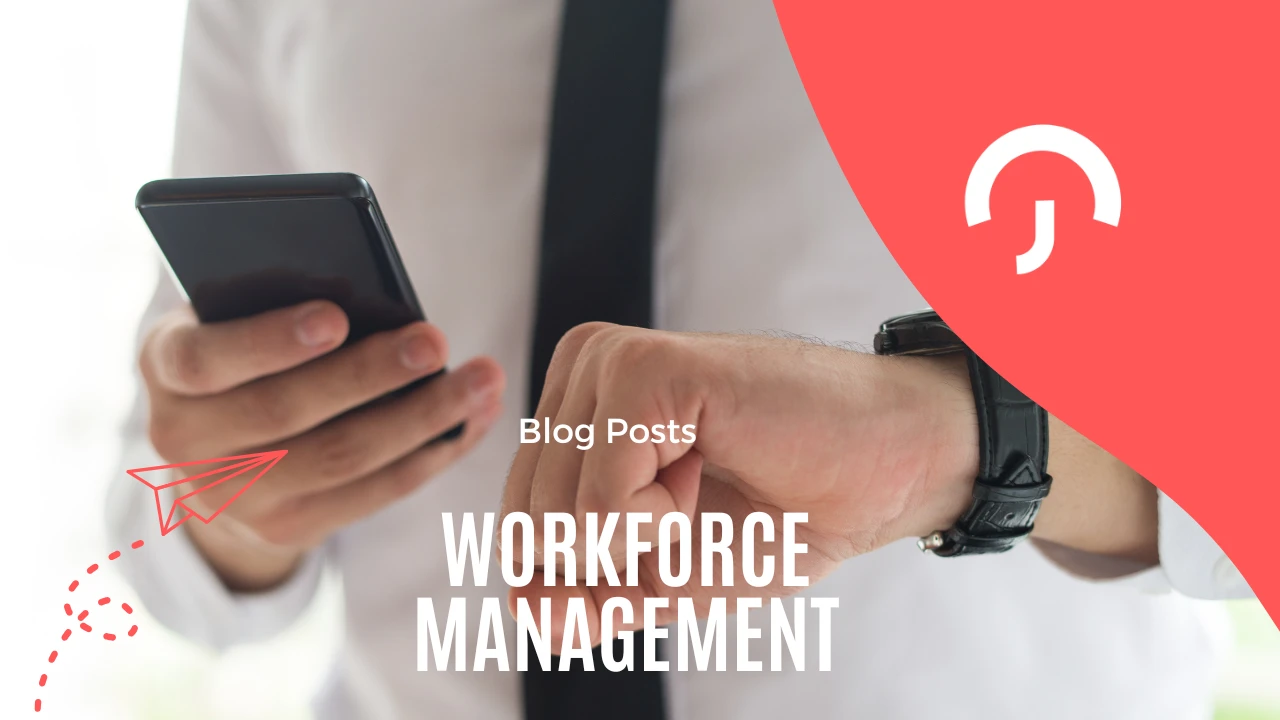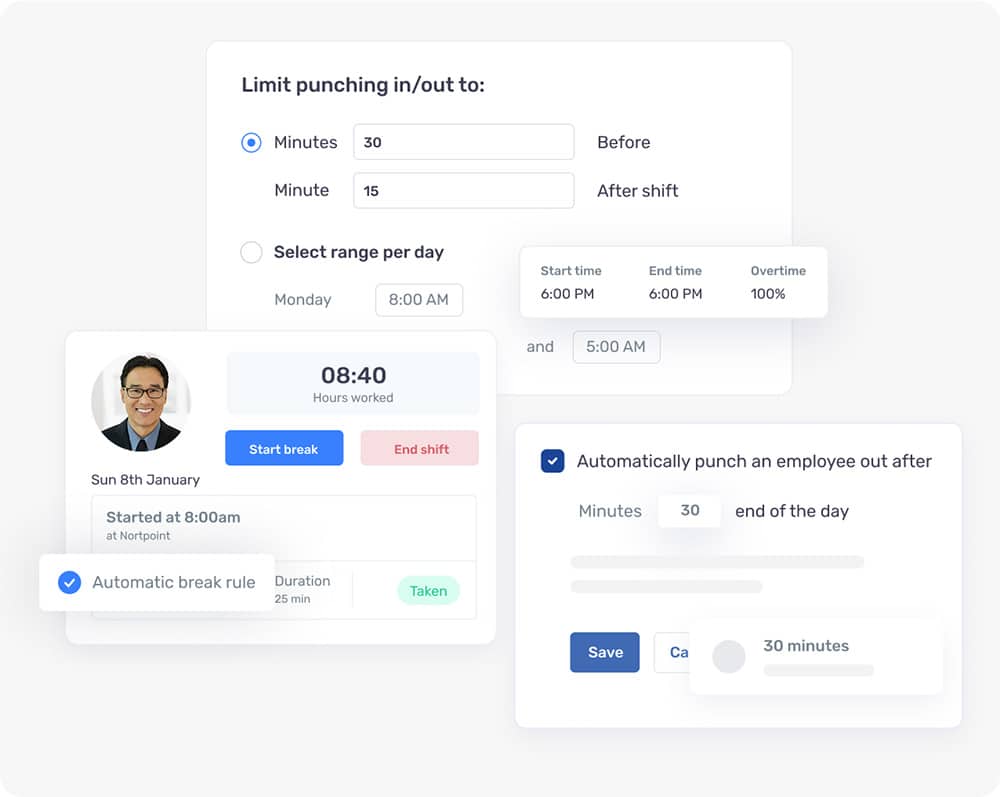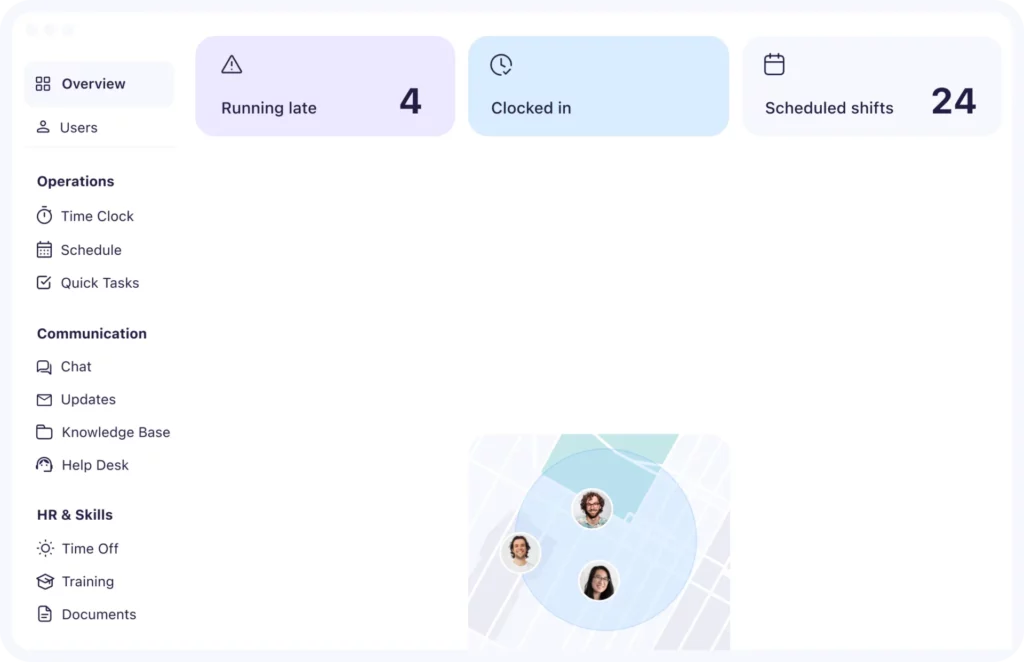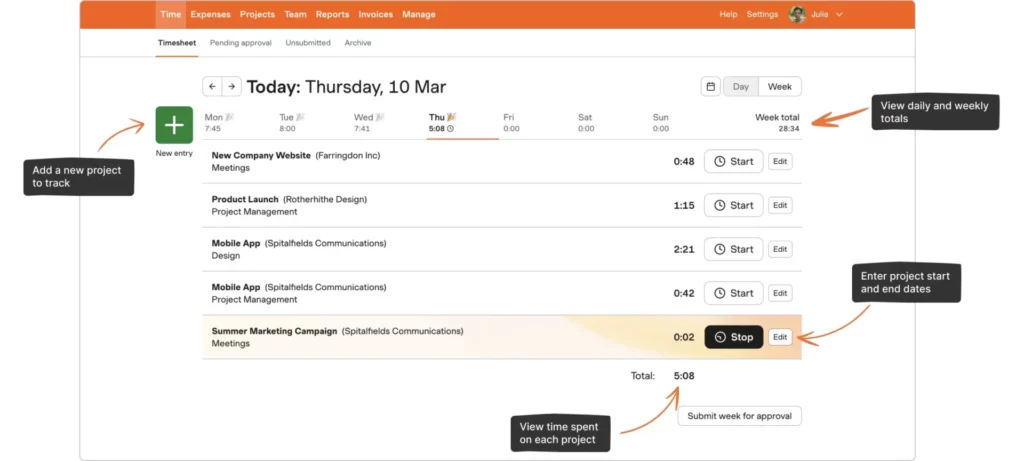Managing employee attendance and time off is an integral part of maintaining productivity, compliance, and employee satisfaction. While most companies have systems in place for handling paid leave, like vacations, sick days, or holidays, unpaid time off often goes under-managed. This oversight can lead to payroll discrepancies, legal issues, and operational inefficiencies. Implementing an unpaid time off tracker can solve these problems and ensure that all employee absences, regardless of their nature, are recorded with accuracy and clarity.
What Is an Unpaid Time Off Tracker?
An unpaid time off tracker is a dedicated tool or system used by businesses to log and monitor instances when employees are absent from work without receiving compensation. Unlike paid leave, which is typically covered under company policy or employment agreements, unpaid leave occurs for various reasons, ranging from personal commitments to extended medical recovery, family emergencies, or even voluntary time off when paid leave is exhausted.
This tracker can be a simple spreadsheet in a small organization or a component of a comprehensive HR software system in larger enterprises. Regardless of the form it takes, its primary function is to ensure that every hour or day of unpaid absence is accounted for, reducing confusion and maintaining fair labor practices.
Why Use an Unpaid Time Off Tracker?
The importance of maintaining a reliable unpaid time off tracker cannot be overstated. Here are several compelling reasons businesses of all sizes should utilize such a system:
Compliance with Labor Laws
Employers are required by law to maintain accurate records of employee work hours and leave. Failing to track unpaid time off could lead to non-compliance, particularly when it affects wage and hour regulations. An unpaid time off tracker helps organizations stay compliant by providing a documented history of leave, which can be critical during audits or disputes.
Payroll Accuracy
Unpaid leave affects an employee’s paycheck. Without an effective unpaid time off tracker, there is a high risk of miscalculating salaries, either overpaying employees who took unpaid leave or mistakenly docking wages for absences that were never approved. A good tracker integrates with payroll systems to ensure accurate deductions and transparency in wage calculations.
Performance and Attendance Management
When employees frequently take unpaid time off, it may indicate deeper issues such as burnout, personal challenges, or dissatisfaction. With an unpaid time off tracker, HR professionals can identify patterns and intervene early, offering support where needed or addressing any policy violations effectively and fairly.
Resource and Workforce Planning
Knowing when and how often employees are taking unpaid leave enables better planning. Managers can anticipate staffing gaps and make arrangements to maintain productivity. Without a tracker, these unexpected absences can disrupt workflows, delay projects, and burden remaining team members.
Spotlight on Day Off App
When scouting for a top-notch unpaid time off tracker, one standout option that deserves attention is Day Off App, a modern, cloud-based leave management tool used by over 5,000 teams globally across diverse environments. Let’s break down what makes it a powerful ally for HR departments and managers managing unpaid absences.
Complete Leave-Type Flexibility
Day Off App supports an unlimited array of leave types, annual leave, sick days, comp-offs, and crucially, unpaid time off, which can be tracked by day or by hour. This means HR can configure unpaid leave policies with precision: negative balances, half-days, or comp-off options can all be customized per employee.
Robust Accruals & Carry-Over Management
Through its accrual engine, it supports diverse accrual schemes (monthly, bi-weekly, X hours per period), making it easy to incorporate unpaid leave logic, whether that means freezing accruals during unpaid periods or allowing controlled carry-overs
Hierarchical Approval Workflows
Need more than a simple “approve/reject”? Day Off supports multi-step approval flows, letting you route unpaid leave requests through managers, HR, or both. Delegation options ensure continuity even when a manager is on leave
Shared Team Calendar & Blockout Dates
The team calendar offers clear visibility into who is out be it paid or unpaid leave and allows admins to define blackout periods where leave isn’t allowed (like fiscal year end) a smart feature for paid leave, but also applicable for unpaid time off tracker needs
Sub-Team & Location Customization
Whether your company spans multiple offices or departments, you can create sub-teams, each with distinct working days, holiday calendars, and policies, meaning unpaid leave rules can differ across regions or functions
Real‑Time Analytics & Reporting
Day Off empowers admins with powerful reports, tracking who is on leave when and how often. This is invaluable for spotting unpaid time off trends, such as leave spikes in certain teams, prompting data-driven interventions .
Mobile Access & Notifications
Available on iOS and Android, the app lets both employees and managers submit, review, and approve leave, even unpaid days, on the go. Push and email alerts ensure no request slips through, whether it’s paid or unpaid time off tracker activity
Integrations & Security
Day Off integrates seamlessly with Google Calendar, Outlook, Slack, and Microsoft Teams, automatically syncing approved leaves, including unpaid ones. Plus, it meets strong security standards: TLS encryption, SOC‑2 certified infrastructure, and daily encrypted backups ensure confidential unpaid leave data remains protected
Why Day Off Significantly Enhances Your Unpaid Time Off Tracker
Integrating Day Off into your HR ecosystem elevates your unpaid time off tracker from a basic record-keeping tool into a dynamic, automated leave management solution. It not only streamlines tracking but ensures accuracy, transparency, and strategic oversight across your organization. Here’s how:
Seamless Payroll Integration: Automatically calculates unpaid leave and syncs it directly with payroll systems, eliminating manual errors and ensuring precise wage deductions.
Enhanced Managerial Visibility: Offers real-time insights into team availability, highlighting overlapping or excessive unpaid absences so managers can plan and allocate resources efficiently.
Policy Flexibility Across Roles & Locations: Supports distinct unpaid leave policies tailored to different teams, departments, or global locations, ideal for distributed or hybrid workforces.
Instant Alerts & Approvals: Sends automated notifications to managers and HR whenever an unpaid leave request is submitted, pending, or approved, ensuring no request goes unnoticed.
Actionable Insights Through Reporting: Generates detailed, exportable reports on unpaid leave trends, departmental patterns, and individual absence histories, critical for audits, compliance, and long-term planning.
With Day Off, every aspect of your unpaid time off tracker is optimized for clarity, consistency, and control. It empowers businesses to maintain operational balance while offering employees the flexibility they need.
Features of an Effective Unpaid Time Off Tracker
Not all leave trackers deliver the same value, particularly when it comes to managing unpaid absences. A truly effective unpaid time off tracker should go beyond basic data logging to offer features that improve administrative efficiency, foster transparency, and support strategic workforce management. Here are the core features that make a tracker truly robust:
Detailed Employee Profiles
Each entry in the tracker should be tied to a comprehensive employee profile, including full name, job title, department, team, and direct supervisor. This level of detail ensures accountability and enables HR and managers to quickly assess leave histories, identify patterns, and resolve discrepancies efficiently.
Precise Leave Duration and Dates
Capturing the exact start and end dates, along with the total number of hours or days missed, is crucial for payroll adjustments, resource planning, and compliance. A high-quality unpaid time off tracker should support both full-day and partial-day tracking, providing flexibility for various leave scenarios.
Reason for Leave (Optional and Confidential)
While it’s important to maintain employee privacy, offering a field for employees to provide a reason for their unpaid leave, when appropriate, can help HR identify broader trends. For instance, a spike in unpaid leave for childcare or health reasons could prompt the company to reevaluate benefits or support policies.
Approval Workflow and Authorization Logs
A well-structured unpaid time off tracker should incorporate an approval workflow that documents each step: who requested the leave, who approved it, and when it was authorized. This creates a transparent audit trail that protects both the employee and the organization in case of any disputes or audits.
Seamless System Integration
To maximize efficiency and accuracy, the tracker should integrate smoothly with existing payroll, time-tracking, and HR information systems. This eliminates the need for duplicate data entry and ensures that any unpaid time off is automatically reflected in salary calculations and HR records.
Advanced Reporting and Analytics
The most powerful trackers offer dynamic reporting capabilities that go beyond simple totals. They enable HR teams to generate detailed insights, such as:
Frequency of unpaid leave by individual or department
Total unpaid days taken within a defined period
Leave trends by season, team, or tenure
Compliance and audit-ready reports for regulatory reviews
These insights help organizations make informed decisions, anticipate workforce gaps, and create policies that balance business needs with employee well-being.
Manual vs. Automated Tracking: Choosing the Right Unpaid Time Off Tracker
When it comes to managing unpaid leave, organizations typically adopt one of two approaches: manual tracking or automated systems. While both methods can serve the purpose, the efficiency, accuracy, and scalability they offer differ greatly. Understanding the pros and cons of each can help you choose the most effective unpaid time off tracker for your organization.
Manual Tracking
Manual tracking methods include using spreadsheets, paper forms, or shared documents to log unpaid time off. These tools are often favored by small businesses due to their low upfront cost and minimal technical setup. However, this approach comes with notable limitations:
High Risk of Human Error: Manual data entry increases the likelihood of mistakes, such as incorrect dates, missed entries, or inaccurate payroll deductions.
Time-Consuming Processes: HR staff and managers spend significant time updating, cross-referencing, and verifying leave data.
Poor Visibility and Collaboration: Sharing spreadsheets across departments can lead to version control issues and confusion, making it hard to get a real-time picture of team availability.
Limited Reporting and Scalability: Manual systems typically lack built-in analytics, making it difficult to identify trends or scale operations as the organization grows.
While manual trackers may suffice for very small teams, their inefficiencies become quickly apparent as your workforce expands or compliance needs become more stringent.
Automated Tracking
Automated systems, often embedded within modern HR software platforms, are designed to simplify and enhance every aspect of the unpaid time off tracker process. These tools not only record leave but also integrate it with payroll, approvals, and reporting features. Key advantages include:
Real-Time Data Synchronization: Leave requests and approvals are updated instantly across all connected systems, ensuring accurate and current records at all times.
Automated Payroll Adjustments: Unpaid days are calculated automatically and reflected in payroll, reducing the administrative burden and eliminating costly errors.
Integrated Approval Workflows: Leave requests can be routed through multi-level approval chains, with full visibility and accountability built in.
Intuitive Dashboards and Reports: Managers and HR teams can quickly access analytics to track absenteeism patterns, departmental leave usage, or compliance metrics.
Proactive Notifications: Built-in alerts notify managers and HR about upcoming or overlapping unpaid leave, helping them make timely staffing decisions.
Frequently Asked Questions (FAQ) About Unpaid Time Off Tracker
How does unpaid time off affect employee benefits?
Unpaid time off can impact certain benefits such as health insurance contributions, paid leave accruals, and retirement plan matches, depending on company policy. Some employers suspend benefit contributions during extended unpaid leave, while others may require employees to cover their own premiums during that period.
Can unpaid time off be used interchangeably with vacation or sick leave?
No. Unpaid time off is distinct from vacation or sick leave. It is typically used after paid leave balances have been exhausted or for reasons that don’t qualify under standard PTO policies. It’s crucial that your unpaid time off tracker differentiates between these leave types for compliance and reporting purposes.
Is manager approval always required for unpaid time off?
Yes, in most organizations, unpaid time off must be approved to avoid misuse and to ensure adequate staffing. The unpaid time off tracker should include a documented approval process, especially for planning purposes and to protect against unauthorized absences.
How often should HR audit the unpaid time off tracker?
Ideally, HR teams should review the tracker monthly or quarterly to ensure data accuracy, identify trends, and prepare for payroll or audits. Regular audits help maintain the integrity of the leave records and highlight potential policy gaps.
What’s the difference between unpaid time off and job-protected leave?
Unpaid time off is a general term for time away without pay, while job-protected unpaid leave (such as FMLA in the U.S.) guarantees the employee’s job will be available upon return. Your tracker should be able to distinguish between these categories for legal compliance and internal reporting.
Can unpaid time off be tracked hourly instead of daily?
Yes. A flexible unpaid time off tracker should support hourly tracking, which is especially useful for part-time employees, contractors, or cases where only a few hours off are needed rather than a full day.
How is unpaid time off handled during company holidays?
If an employee is on unpaid leave during a company holiday, they typically are not paid for that holiday. Your unpaid time off tracker should be set up to identify overlaps with holidays and ensure payroll reflects the correct status.
Can employees access their unpaid leave balances?
In systems like Day Off App, employees can view their leave history and remaining balances, including unpaid time off. This transparency encourages responsibility and reduces HR workload by minimizing inquiries.
Is it necessary to track unpaid time off for freelance or contract workers?
Yes. Even though freelancers are not typically paid for time not worked, logging unpaid time off can help project managers with resource planning and client reporting, especially in long-term engagements.
What happens if an employee takes unauthorized unpaid leave?
Unauthorized leave is a disciplinary matter. A well-maintained unpaid time off tracker can serve as evidence to distinguish between approved and unapproved absences, supporting fair and consistent HR enforcement.
Conclusion
Effectively managing unpaid leave is not just about tracking absences, it’s about ensuring fairness, accuracy, and operational consistency across the organization. A well-designed unpaid time off tracker empowers HR teams and managers to handle leave requests transparently, align payroll accurately, and make informed workforce decisions. Whether you choose a manual method or invest in a robust tool like Day Off App, incorporating a strategic approach to tracking unpaid time off is essential for compliance and long-term efficiency. As the modern workplace continues to evolve, having a reliable unpaid time off tracker in place will be a cornerstone of responsible and agile HR management.




